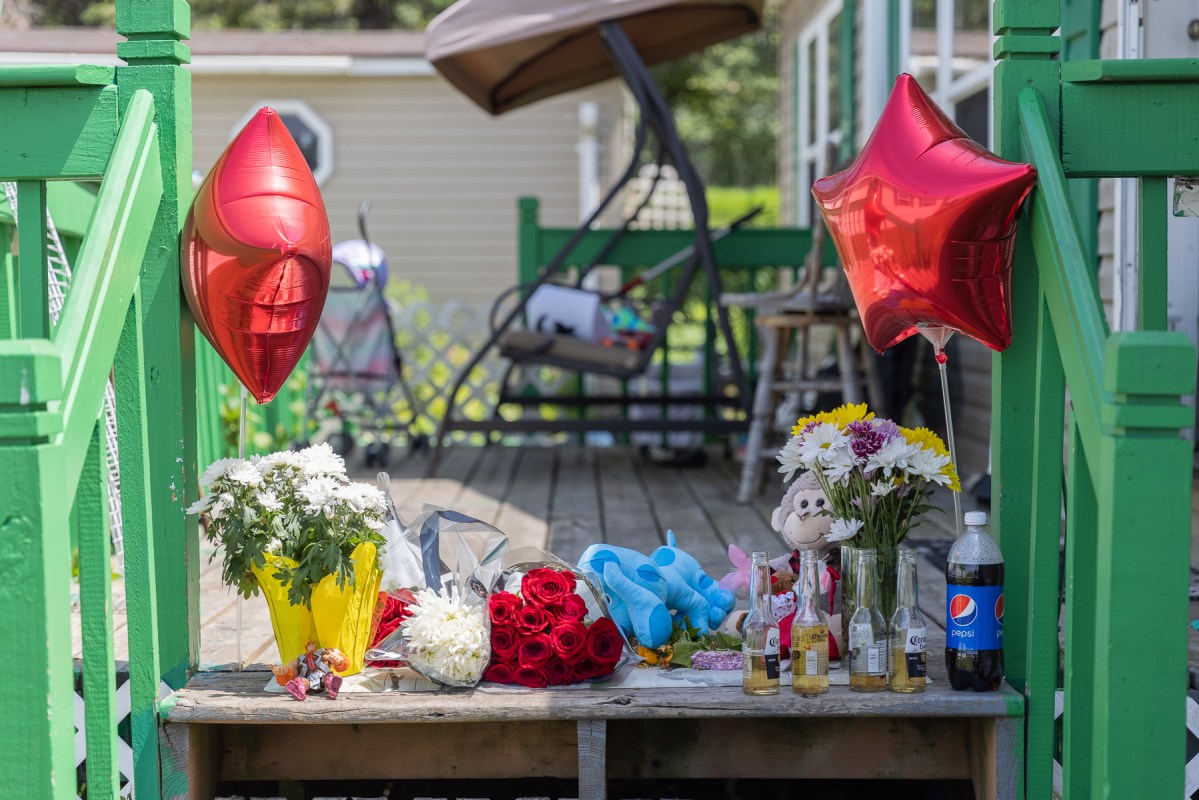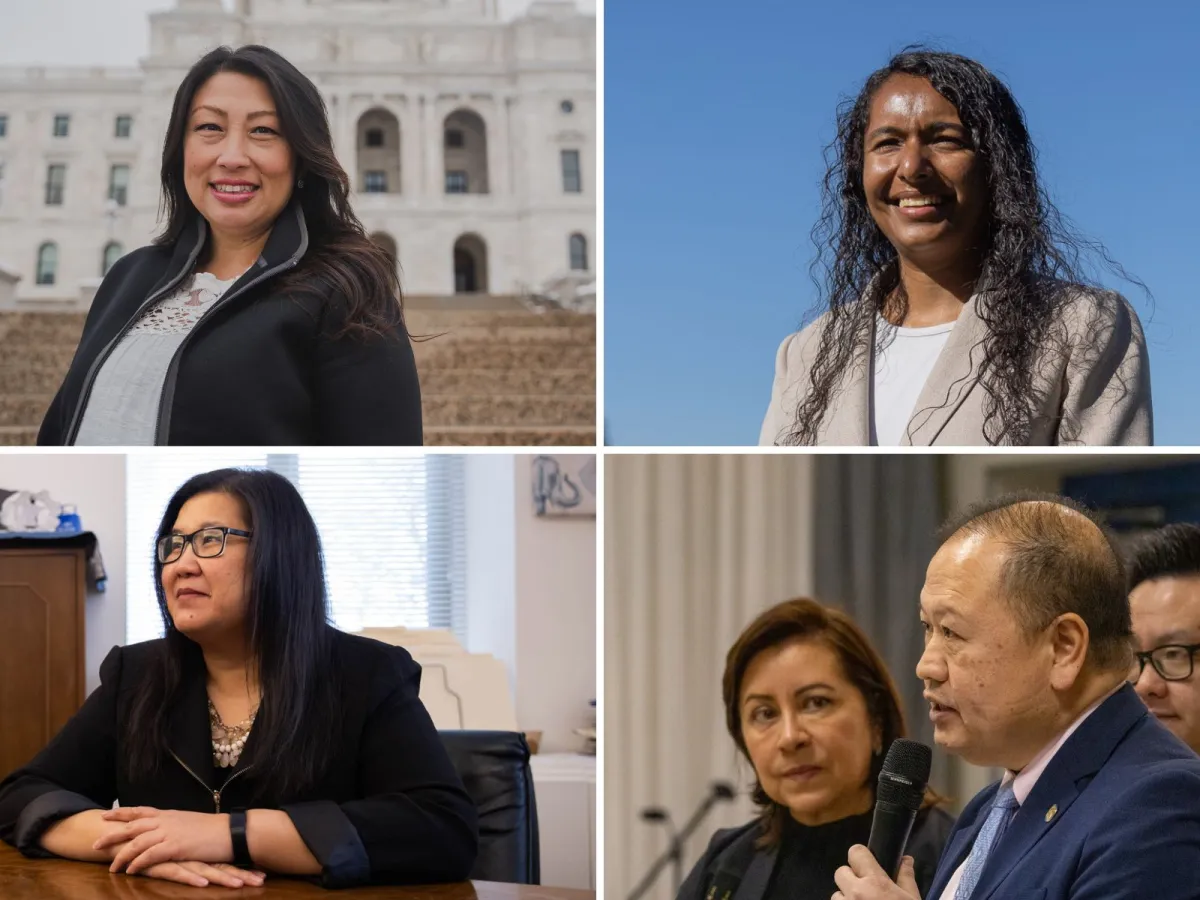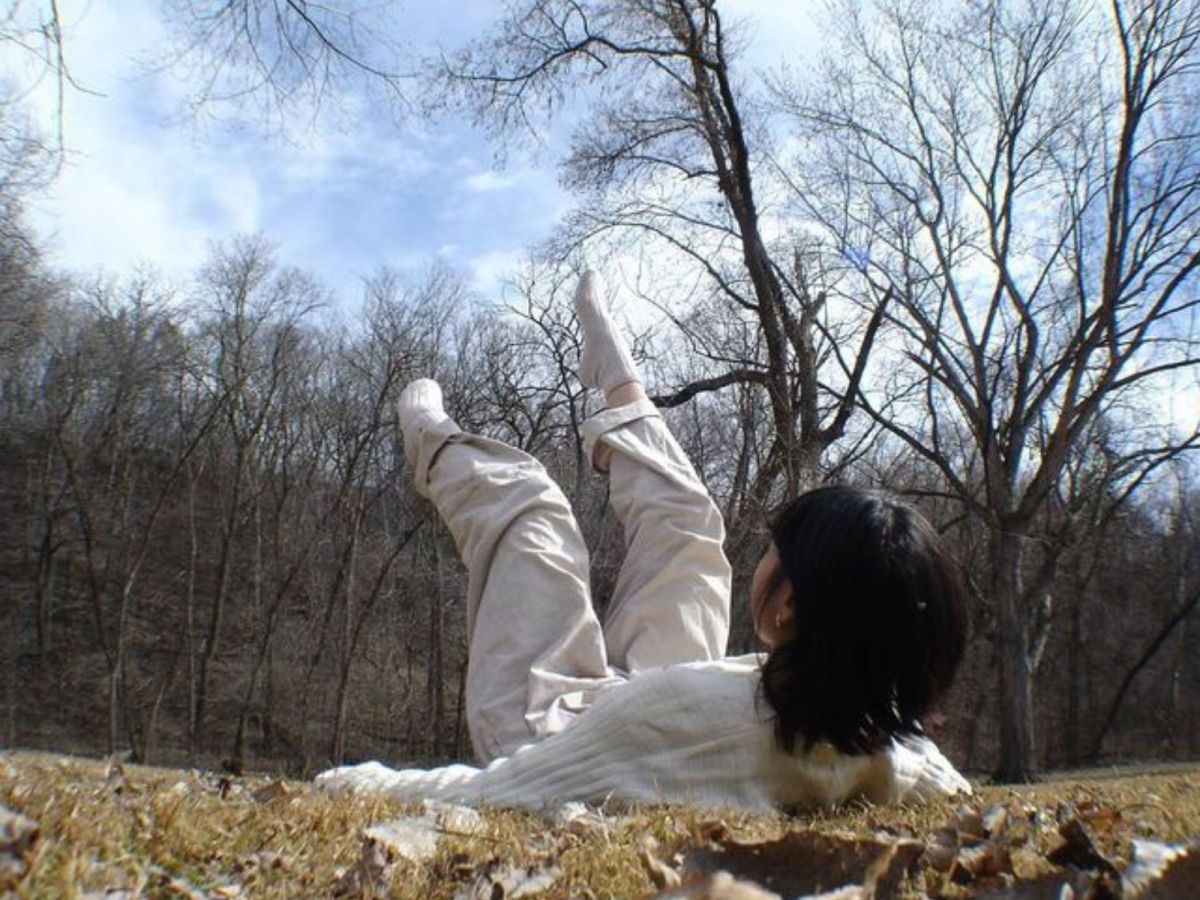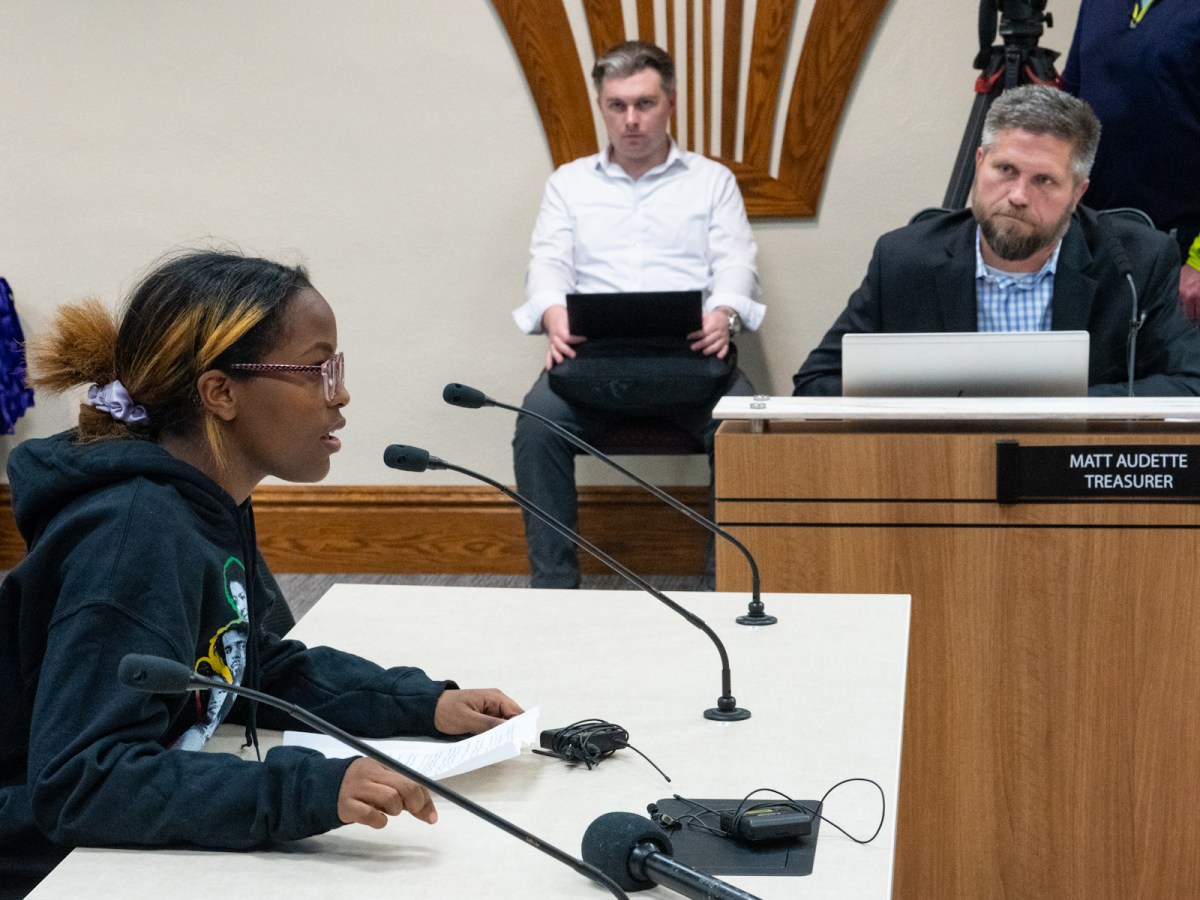The death of a Maplewood family of five over the weekend left family members, friends, and the community reeling from grief and confusion this week.
The suicides of Yee Lee and Molly Cheng, and Cheng’s apparent drowning of the couple’s three young children in Vadnais Lake shocked the country. It also raised questions about how culture can influence the way people experience trauma that touches all communities, and what culturally sensitive services exist to serve them. Lee, Cheng, and their family are Hmong.
Lee committed suicide at home on July 1 while his family was present. Cheng then took their children—Phoenix, Quadrillion, and Estella Lee, ages 3 through 5—to the lake in Vadnais Heights, where she apparently drowned them and herself. Cheng and the children’s bodies were recovered from the lake that evening and the next morning.
At the same time, tens of thousands of Hmong community members from around the world were converging in St. Paul for the annual Hmong International Freedom Festival, a time for celebration and reunion with family and friends.
“This tragic event is not only the loss for the two families that are involved—it’s a loss for the whole community,” said Vue Chu, who serves as mediation chair for the Hmong 18 Council.
The Hmong 18 Council formed in 1997 after a similar incident involving a local mother who killed her six children. It works as a conflict resolution body for the local Hmong community, appointing a representative from each of the 18 Hmong clans. The council, which has certified mediators, encourages families undergoing crises to reach out for help.
HaoPay Lee from Violence Free Minnesota, a statewide coalition working to end relationship abuse, said her organization is looking at the case from the perspective of gender-based violence and cultural influences surrounding shame.
“Mental health and domestic violence are amongst a couple of other taboo topics for the community,” Lee said. “Typically, nobody wants to talk about it.”
RELATED STORIES
The Ramsey County Sheriff’s Office, which is investigating the deaths, has not discussed what could have prompted the events on July 1. The office has said it’s investigating the deaths of Cheng and her children as a triple murder-suicide. The Ramsey County Medical Examiner ruled that Lee committed suicide and died of a gunshot to the head.
A relative said Tuesday that “there were things happening” in the couple’s relationship, and asked others not to speculate further.
Mike Hang with the Hmong 18 Council encouraged anyone feeling depressed or suicidal to immediately call suicide prevention hotlines.
“What we want to do is not allow a tragic event like this to ever happen again,” Hang said.
Pheng Thao, co-executive director of Transforming Generations, an advocacy group for Hmong survivors of domestic violence in St. Paul, said people should not feel shame for seeking help.
“Seeking help doesn’t mean that there’s something wrong with us. It means we’re wanting to be better ourselves, that we want to thrive,” Thao said. “Seeking help also does not always equate to something being wrong. People come get services because there’s something just happening in their life and they want to be proactive.”
The family’s deaths are among recent Minnesota cases where parents harmed or were suspected of harming their children. On July 3–a day after Cheng and the last of her children were recovered from the lake–Northfield police announced that they were looking for missing 6-year-old Elle Ragin. Police said Ragin’s mother, Lisa Wade, had committed suicide in her home and “may have been involved” in her daughter’s disappearance, which remains under investigation.
In May, Julissa Thaler of Spring Park allegedly shot her six-year-old son, Eli Hart, nine times and placed him in the trunk of her car after the boy’s father filed court documents seeking custody. In late 2019, David Schladetzky fatally shot his 8- and 11-year-old sons, Nelson and William, in Minneapolis and then killed his ex-wife, Kjersten Schladetzky, and himself.
Sahan Journal spoke with mental health experts about how to process the tragedy and asked researchers why parents across all backgrounds sometimes harm their children. A list of resources is also included below for anyone looking for help.
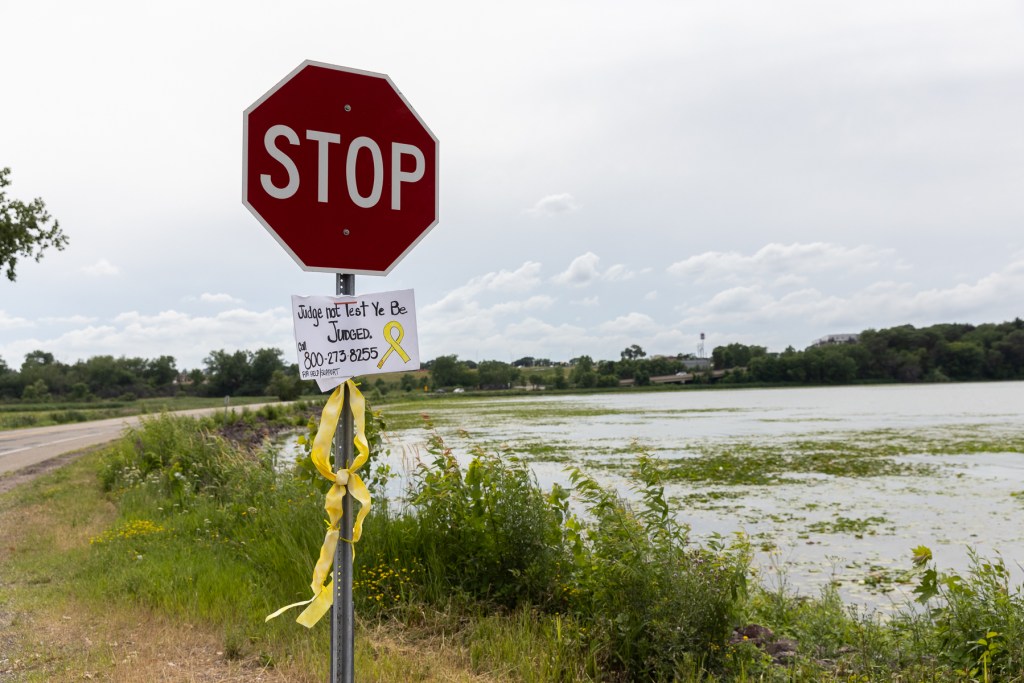
If I’m feeling depressed or suicidal, what should I do?
The National Alliance on Mental Illness recommends that if you or someone you know is in crisis, call a free, 24-hour crisis hotline at 1-800-273-8255. You can visit your primary doctor to discuss next steps.
If a child’s safety is in question, contact child protective services. A list of offices in Minnesota by county can be found here.
If it’s an emergency situation, or other options recommended by a doctor are not working for you, call 911.
Why do parents sometimes kill their children?
Susan Hatters-Friedman, a professor of forensic psychiatry at Case Western Reserve University in Ohio, said forensic psychiatrists have identified five main motives behind filicide—parents killing their children:
- The killing resulted from chronic abuse or neglect.
- The child was unwanted by a parent.
- One parent wants to exact revenge on the other.
- The parent kills out of altruistic love to spare the child pain.
- The parent is experiencing acute psychosis.
“This is a horrific crime for people to understand and imagine,” Hatters-Friedman said. “That’s why it’s helpful to be aware of the different essential motives.”
However, she added, it’s important for people not to rush to judgment.
A mother’s desire to end her own life is often the impetus for killing children, said Gina Wong, a professor at Athabasca University’s Graduate Centre for Applied Psychology. Wong studies mothers who commit suicide.
“In the throes of mental illness, a mother sees the children as an extension of herself and/or that the fate they would live without her–leaving them to grieve her loss, and in this case, the death of their father as well–could compel her to take them with her in death,” said Wong, who is also vice president of Postpartum Support International Canada.
Is murder-suicide common?
It’s unclear how often murder-suicides in families have occurred. Hatters-Friedman said 16 to 29 percent of mothers kill themselves when killing their child, adding that it’s more common for fathers to commit suicide in such circumstances.
According to a study from the Violence Policy Center, a national gun control advocacy organization, there were an estimated 1,240 reported murder-suicide deaths in the United States in 2019. The same study found 65 percent of murder-suicides involved an intimate partner.
Lee from Violence Free Minnesota described a complex dynamic that emerges in Hmong relationships, oftentimes due to patriarchy.
“Murder-suicide is something that is very common in the Hmong community,” Lee said. “It’s not a new phenomenon that just happened.”
Building Our Future, a global campaign against gender-based violence in the Hmong community, has tracked 87 murder-suicides among Hmong people across the country over the last 40 years.
“In this case, [Yee Lee] chose to commit suicide in front of his family and children, knowing that [Molly Cheng] had no one,” Lee said.
In this case, Lee said, Cheng would ultimately be shamed by her family and community as a result.
“We have this saying that translates to, ‘As your mom, when I’m no longer alive, nobody else will truly love you,’ ” Lee said. “That is a very real thing. Historically, we have not been kind to orphans.”
Social media posts showed that Cheng’s mother died a few years ago.
Lee added: It’s possible Cheng did not want her children to grow up with shame and without love.
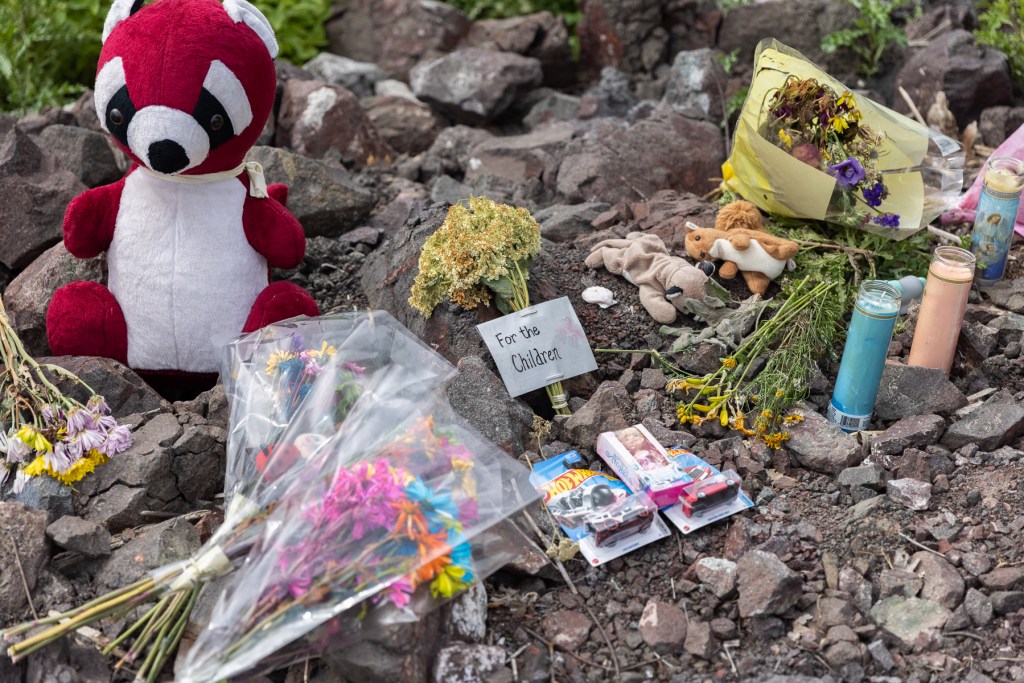
How should I talk to young children about what happened?
Kathleen Kruse, a child and adolescent and forensic psychiatrist in Ohio, encourages parents and family members to speak to children with direct, straightforward terminology.
“In western culture and American culture specifically, we tend to use a lot of euphemisms. So we’ll say things like ‘passed away’ or ‘in a better place,’” Kruse said. “For younger children, it’s hard to grasp these concepts if we’re not using direct terminology about death and dying.”
A child’s ability to understand the permanency of death varies by age. Children under the age of about 6 or 7, Kruse said, might need repeated conversations about the death before they understand what it means.
Kruse added that parents should be prepared for a variety of emotions in their child, and that their emotional response may change over time as they process information.
“It’s important to understand and appreciate their own emotional responses to what’s happening and share that with the children,” Kruse said. “Sharing their own grief response and how they regulate those emotions will help the child express and then respond to their own feelings.”
Kruse reiterated that children will also respond best to direct and simple terminology when it comes to conversations about severe mental illness.
“It’s important that loved ones in these types of circumstances are creating a safe space to explore a child’s feelings and talk about them, whether that’s a parent, aunt and uncle, or another loved one in the family unit or community structure,” Kruse said.
However, Wong, the Canadian researcher, recommends not discussing the weekend’s deaths with children.
“These tragedies are difficult for adults to understand,” she said. “Exposing young children to tragedies like this is not recommended. Children can experience secondary trauma as a result.”
Thao said he encourages Hmong families to also talk about the role gender and domestic violence plays in such incidents.
“Families should definitely talk about it in terms of not only suicide, mental health, a couple not having the best marital relationship,” Thao said. “But talking about it in terms of domestic violence, and how we often blame women for every marriage that falls apart in the Hmong community, and that there’s no responsibility on the men.”
At what age is it appropriate to talk with children about something like this?
According to Kruse, the general recommendation for talking about death with children is that if the loss is going to affect the child’s life, have the conversation with them—regardless of age.
Start with using simple terms to introduce the concept of death for children 6 or 7 and younger, she said. Around 7, 8, or 9 years of age, children gain more understanding about death. Pre-adolescents and teenagers have an even more concrete understanding, Kruse said
Talking about suicide, for example, works similarly. For a young child, the impact of death is easier to grasp than how the death occurred. Kruse said preadolescents and teenagers need more directed and frank conversations about suicide that also create a space to talk about signs of mental illness in their loved ones or themselves.
What cultural influences could impact how people in the Hmong community act, and how they respond to seeking help?
Lee said looking at the Vadnais Heights deaths from a gender perspective adds a level of nuance to the case.
There is an impression within the Hmong community that talking about mental health or domestic violence brings shame to the family, she said.
“We function as a collective,” Lee said. “The wellbeing of the family and the community always comes before the person. If a person were to seek outside services or speak out about their experiences or needs—whether it’s mental health or domestic violence—that brings a negative connotation to the family or the community.”
Thao said some in the Hmong community placed blame on Cheng after Lee committed suicide. Stories about the deaths attracted dozens of comments on social media as commentators theorized about the couple’s private lives and what could have led to their deaths.
“I don’t want to take away from the issue of suicide, but the systemic piece is the blaming that happens after a husband has committed suicide,” Thao said. “It’s a form of violence embedded in patriarchy—to shame women to death.”
Transforming Generations is implementing preventative measures so that families, couples, and individuals have the tools they need to navigate violence at home. The need for prevention is urgent as marginalized people “fall through the cracks” of the criminal justice system, child protection, and social services, Thao said.
“We know that there are providers out there that want to do their best,” Thao said, “but there are limitations to what they can do because of the policies and laws that control how they move.”
What culturally sensitive services exist for the Hmong community?
Lee from Violence Free Minnesota encourages members of the Hmong community struggling with mental health to seek out Hmong-speaking mental health professionals who have an understanding of their culture.
She added that domestic violence victims can call the Hmong Family Strengthening Helpline at 1-877-740-4292, which is on 24 hours a day, seven days a week. Calls are free and confidential.
From a systems perspective, Lee said she’s concerned about a lack of cultural awareness in mainstream mental health and domestic violence care systems for the Hmong community.
“This is a perfect example of how [mainstream services] failed the Hmong community. Systems that are in place do not serve and do justice to communities of color,” Lee said. “Get to know your community and don’t judge the community based on one or two very high profile cases. There’s so much more nuance to that.”
Thao from Transforming Generations recommends calling their organization at (651) 703-4169 to get connected with culturally specific programs.
If anyone is concerned about their privacy within the Hmong community, Thao said, Transforming Generations can connect them with their sibling organizations that work with the Latino and African American communities.
Transforming Generations also has a list of mental health providers of color, including Hmong-speaking providers, that they can refer callers to.
The organization also hosts a support group for Hmong men who have committed harm in their families or are looking to prevent future harm.
“We want more men from the community to attend,” Thao said. “Don’t wait until you’re going to make the choice to use violence, or raise your fist, or to use a gun. Come before that.”
Are there organizations that serve the Hmong community specifically that can help me or my loved one with questions about mental health?
Hmong Family Strengthening Helpline
(877) 740-4292
Transforming Generations
(651) 703-4169
Violence Free Minnesota
For immediate help: (866) 223-1111
Asian Women United Of Minnesota
(612) 724-8823
Building Our Future: A Community Campaign




